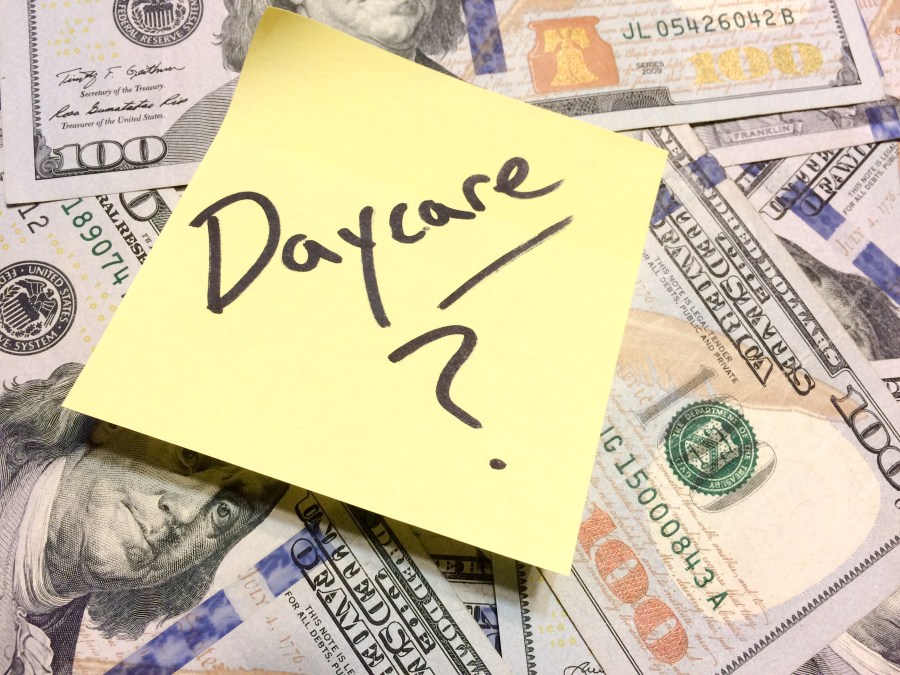When you think about the costs of raising a child, what comes to mind? Diapers, formula, clothes, and toys are probably at the top of your list. But there’s one expense that often gets overlooked – childcare. In recent years, the cost of childcare has skyrocketed, and it’s placing a significant financial strain on families across the country. In this article, we’ll explore the true cost of childcare, the factors contributing to the high costs, the impact on families, and possible solutions to this growing problem.
The True Cost of Childcare

Before we dive into the reasons why childcare is so expensive, let’s first break down the various costs associated with it. Depending on where you live and the type of childcare you choose, the costs can vary significantly. However, there are a few common expenses that most families will incur.
Tuition or Fees: This is the most obvious cost associated with childcare. Whether you’re enrolling your child in a center-based program or hiring an in-home provider, you’ll have to pay for their services. According to a recent report by Child Care Aware of America, the average annual cost of center-based infant care is $11,896, while the average annual cost of in-home care is $28,353. That’s a significant expense for most families, especially when you consider that childcare is often only one of many expenses that come with raising a child.
Supplies: Depending on the age of your child, you may need to provide certain supplies, such as diapers, wipes, formula, or food. Even if your childcare provider supplies these items, you may still need to pay an additional fee to cover the cost.
Transportation: If your child attends a center-based program that’s not within walking distance of your home or workplace, you’ll need to factor in transportation costs. This may include the cost of gas, public transportation, or paying for a ride-share service.
Additional Expenses: Depending on the provider you choose, you may also need to pay for additional expenses, such as late fees, field trips, or special activities.
When you add up all of these costs, it’s easy to see why childcare is such a significant expense for families. In fact, for many families, childcare is one of the largest expenses they face each month.
Factors Contributing to the High Cost of Childcare

So why is childcare so expensive? There are several factors contributing to the high costs.
Qualified Staff: One of the most significant expenses for childcare providers is hiring qualified staff. Providers need to pay their staff a living wage, which can be challenging when you consider that many childcare providers are small businesses with limited resources. Additionally, providers may need to offer benefits, such as health insurance or retirement plans, to attract and retain qualified staff.
Facilities: Maintaining a safe and clean facility is essential for any childcare provider, but it can also be expensive. Providers need to pay for rent or mortgage, utilities, insurance, and maintenance costs. They may also need to purchase equipment and supplies, such as cribs, toys, and educational materials.
Quality Programs and Resources: Parents expect high-quality programs and resources for their children, and that comes at a cost. Providers need to invest in staff training, educational materials, and other resources to provide the best possible care for children.
Regulations: Childcare providers are subject to numerous regulations at the federal, state, and local levels. While these regulations are intended to ensure the safety and well-being of children, they can also add to the cost of providing care. Providers need to comply with licensing requirements, staffing ratios, and other rules, which can be challenging and expensive.
Government Policies: While the government provides some funding for childcare, it’s not enough to meet the growing need for affordable and high-quality care. The federal government offers subsidies and tax credits for families to offset the cost of care, but the eligibility requirements and funding levels vary by state. Additionally, many families may not be aware of these programs or may find the application process challenging.
The Impact on Families
The high cost of childcare is not just a financial burden; it can also have a significant impact on families. Parents who struggle to afford childcare may face stress and anxiety, as they try to balance the costs of care with other expenses, such as housing, food, and transportation. Some families may be forced to make difficult choices, such as leaving the workforce or reducing their work hours, which can impact their long-term financial stability.
The cost of childcare also has implications for child development. High-quality care can have a positive impact on children’s cognitive and social-emotional development, but when parents cannot afford quality care, children may miss out on these benefits. Additionally, when parents are stressed about the cost of care, it can impact their ability to provide a nurturing and supportive environment for their children.
Possible Solutions
So what can we do to address the high cost of childcare? There are several possible solutions.
Increase Government Support: The federal government could increase funding for childcare subsidies and tax credits, making it easier for families to access affordable care. Additionally, the government could invest in programs that help providers reduce their costs, such as training programs or grants for facility improvements.
Offer More Affordable Options: Providers could offer more affordable options, such as part-time care or sliding scale fees based on income. Additionally, providers could partner with employers or other organizations to offer discounted care to their employees or members.
Provide More Workplace Benefits for Parents: Employers could offer more workplace benefits, such as flexible work schedules, telecommuting options, or on-site childcare. These benefits could help parents balance their work and family responsibilities, reducing the need for expensive care.
Stats and Data
According to a report by Child Care Aware of America, the average annual cost of center-based care for an infant in the United States is $11,896. For a four-year-old, the cost drops slightly to $9,120 per year. However, these costs can vary significantly by state. For example, in Massachusetts, the average annual cost of infant care is $20,415, while in Mississippi, it is $5,178.
In a survey conducted by Care.com, 63% of parents reported that the cost of childcare is their biggest expense, surpassing even housing costs. Additionally, a report by the Economic Policy Institute found that in 33 states and the District of Columbia, the cost of center-based care for an infant exceeds the cost of in-state tuition at a public four-year college.
According to a report by the National Women’s Law Center, more than half of all families in the United States live in a “childcare desert,” meaning that they have limited or no access to licensed childcare providers. This is especially true for low-income families and families living in rural areas.
In terms of government support for childcare, a report by the National Women’s Law Center found that only 1 in 6 eligible children receive assistance through the federal Child Care and Development Block Grant (CCDBG) program. Additionally, eligibility requirements and funding levels for the program vary significantly by state, making it difficult for families to access consistent and reliable support.
Resources in Tampa Bay

There are several government programs available to support families with childcare costs.
One such program is the Child Care and Development Block Grant (CCDBG), which provides subsidies to low-income families to help them pay for childcare. Eligibility requirements for the CCDBG vary by state, but generally families must have an income at or below 85% of the state median income, be working or enrolled in education or job training programs, and have a child under the age of 13 (or under 19 if the child has a disability). Families can apply for CCDBG subsidies through their state’s child care agency.
Another program that provides support for childcare costs is the Earned Income Tax Credit (EITC). The EITC is a tax credit for low- to moderate-income working families. Depending on their income and family size, families can receive a credit of up to $6,728 for the 2021 tax year. Families can claim the EITC when they file their federal income tax returns.
In addition to these federal programs, there are also state-specific programs available to support families with childcare costs. In Florida, for example, the School Readiness Program provides financial assistance to low-income families to help them pay for childcare. Eligibility requirements for the program include income limits, family size, and employment or education status. Families can apply for the School Readiness Program through their local Early Learning Coalition.
In the Tampa Bay area, there are several resources available to families seeking affordable childcare options. The Early Learning Coalition of Pinellas County and its counterpart in Hillsborough provides assistance with finding childcare providers and applying for financial assistance through programs like the School Readiness Program. The Hillsborough County Child Care Licensing and Enforcement program regulates and inspects licensed childcare providers in the area, and provides resources for families seeking childcare. The City of Tampa also operates several community centers that offer affordable after-school programs for children.
The high cost of childcare is a significant issue that affects families across the country. While there are no easy solutions, increasing government support, offering more affordable options, and providing more workplace benefits for parents could help alleviate some of the financial strain. Additionally, as a society, we need to recognize the importance of quality childcare and the impact it has on child development and family well-being. By working together, we can ensure that all families have access to affordable and high-quality care.







